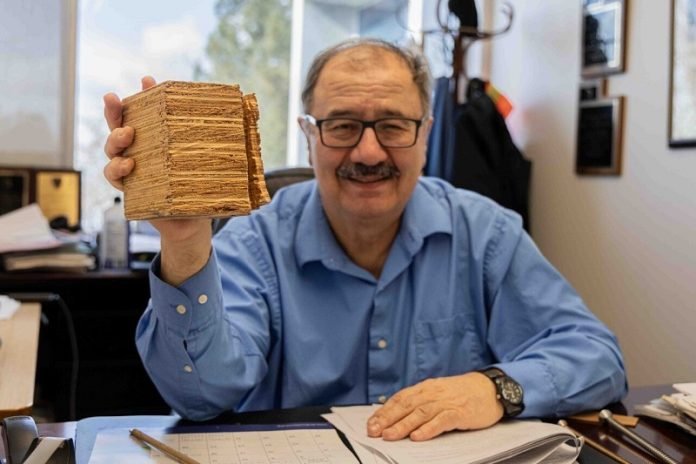
For centuries, wood has been a favorite material for builders everywhere.
From ancient structures in Africa to the cozy log cabins of American folklore, wood has been chosen for its plentiful supply, easy use, and natural beauty.
However, in the last 150 years, as cities have grown upwards with skyscrapers, materials like steel and concrete have taken the lead.
These modern materials support heavier buildings and are less affected by fire, earthquakes, and water damage.
But they’re costly, not renewable, and are bad for the environment, contributing to over 10% of the world’s pollution.
Chris Pantelides, a civil engineering professor at the University of Utah, believes wood shouldn’t be left in the past. He’s been working to bring wood back into the spotlight, showing that it can be just as strong and even better for our planet.
Wood is making a powerful return in the construction scene, thanks to “mass timber.” This innovative material looks simple – just layers of wood glued together – but it’s strong enough to replace steel or concrete in many buildings.
Pantelides, who has spent seven years researching mass timber, shows us that this material is not just about going back to roots but stepping into the future.
Mass timber uses layers of wood pressed tightly together, making buildings lighter and requiring smaller foundations.
Despite being made of wood, mass timber buildings are surprisingly fireproof, moisture-resistant, and very durable.
Plus, they’re eco-friendly. Forests in Europe and Canada grow quickly enough to supply a sustainable amount of wood, which helps reduce carbon dioxide in the air – a big win for our planet.
Living and working in buildings made of wood has another benefit: it makes people feel closer to nature, promoting healthier environments.
But there’s a challenge: tall buildings need materials that can bend without breaking, especially in places prone to earthquakes or hurricanes. This is where Pantelides’s work becomes crucial.
His research is about finding the right mix of wood, shape, and construction techniques to make mass timber as reliable as steel for high-rise buildings.
He’s developed a special kind of plywood by compressing wood chips and gluing them together. This plywood can be connected with steel parts to make strong, flexible joints.
One of Pantelides’s key innovations is the Timber Buckling Restrained Brace (T-BRB), designed to help buildings withstand earthquakes. This shows that with the right technology, wood can be just as modern and safe as any other building material.
In conclusion, wood isn’t just an old-fashioned building material; it’s a sustainable, eco-friendly choice for the future.
Thanks to engineers like Pantelides, we’re rediscovering wood’s potential to create beautiful, strong, and environmentally friendly buildings.
As we face the challenges of climate change and urban development, wood offers a path to build in harmony with nature, making it a true material of the future.



